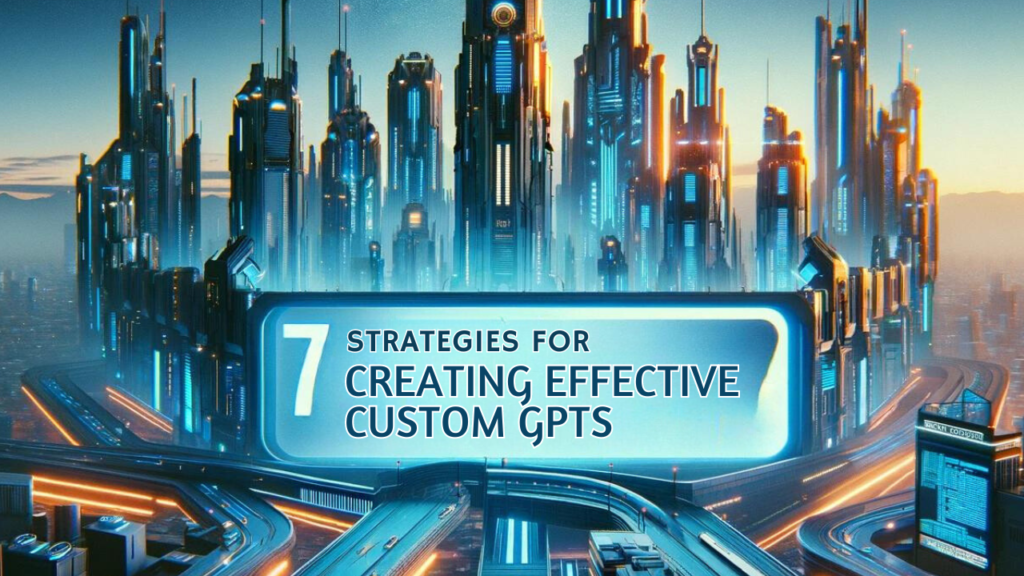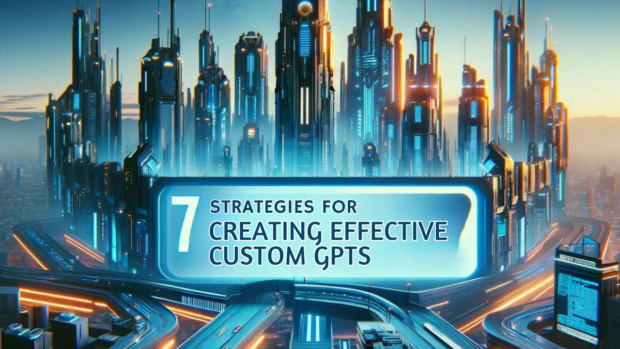
In the vast expanse of artificial intelligence, where algorithms hum and neural networks spark, lies a magical realm—the domain of custom Generative Pre-trained Transformers (Custom GPT). These aren’t your run-of-the-mill AI models; they’re like enchanted quills that write personalized spells. Imagine crafting a chatbot that whispers poetry, a code companion that dances with syntax, or a recommendation genie that knows your literary cravings. These custom GPTs transcend the mundane, allowing us to mold language like clay, tailor interactions to our whims, and conjure solutions for specific needs.
Whether you’re a tech wizard, an AI apprentice, or simply curious about the arcane arts, this journey will unravel the secrets of creating custom GPTs. Buckle up, fellow wanderer, as we venture from theory to practice, weaving spells of words and code.
Contents
- 1 Collaborate With Friends
- 2 Define Clear Objectives
- 3 Curate High-Quality Training Data
- 4 >>> Check Out Our Custom GPTs List for Writers Here <<<
- 5 Choose the Right Model Size and Architecture
- 6 Tailor Your Knowledge Base
- 7 Design Specific Actions and Skills
- 8 Craft Unique Interaction Styles
- 9 > Check Out Our Custom GPTs List for Writers Here <<<
- 10 Conclusion:
Collaborate With Friends
Creating a custom GPT is a collaborative endeavor. Engage with experts from diverse fields—linguists, data scientists, and domain specialists—to ensure your model aligns with your objectives. Their insights will enrich your understanding and lead to more effective GPTs.
Collaboration fosters creativity and ensures a holistic approach. Linguists contribute by fine-tuning language nuances, while data scientists optimize model architecture. Domain specialists provide context-specific knowledge, ensuring your custom GPT performs well in real-world scenarios. By pooling expertise, you create a robust foundation for your GPT.
Define Clear Objectives
Before diving into the technical details, define the scope of your custom GPT. What language tasks do you want it to excel at? Whether it’s generating creative content, providing domain-specific recommendations, or assisting in customer support, clarity on objectives guides subsequent decisions.
Start by identifying your target audience. Are you building a GPT for legal professionals, marketers, or educators? Tailor your objectives accordingly. Next, outline specific use cases. For instance, if your GPT will assist in drafting legal contracts, focus on legal jargon and contract language. Clear objectives prevent scope creep and ensure your GPT aligns with practical needs.
Curate High-Quality Training Data
The quality and diversity of your training data significantly impact your GPT’s performance. Gather a comprehensive dataset that reflects the language patterns relevant to your objectives. Pre-process the data to address noise, duplicates, and formatting inconsistencies.
Consider the source of your data. Extract text from reputable websites, scientific journals, or industry-specific documents. Balance the dataset to avoid bias—include diverse perspectives and avoid over-representing certain domains. Additionally, explore transfer learning from existing GPTs to bootstrap your custom model.

>>> Check Out Our Custom GPTs List for Writers Here <<<
Choose the Right Model Size and Architecture
Decide on the size and architecture of your custom GPT. The model size determines the number of parameters, influencing its capacity to learn complex patterns. Consider factors like computational resources and training time when making this choice.
For specialized tasks, smaller models may suffice. However, if you’re tackling multifaceted challenges, opt for larger architectures. Experiment with different sizes and fine-tune hyperparameters to strike the right balance. Remember that a well-chosen architecture accelerates convergence and enhances performance.
Tailor Your Knowledge Base
Equip your custom GPT with specialized knowledge relevant to your domain. For instance, a GPT for medical professionals should include medical terminology and concepts. A well-curated knowledge base enhances the model’s effectiveness.
Start by identifying key topics within your domain. Compile authoritative resources—research papers, textbooks, or industry reports. Extract relevant information and organize it into a structured format. Integrate this knowledge during fine-tuning to enhance your GPT’s contextual understanding.
Design Specific Actions and Skills
Program your GPT to perform specific actions. Whether it’s data analysis, language translation, or creating art, tailoring these skills ensures your GPT functions effectively in specific scenarios or industries.
Define the tasks your GPT will handle. Create prompts that trigger desired actions. For example, if your GPT assists in code generation, design prompts for different programming languages. Regularly evaluate its performance and fine-tune as needed. Remember that versatility—enabling your GPT to wear multiple hats—adds value.
Craft Unique Interaction Styles
Customize how your GPT interacts. Match communication styles or tones to specific audiences. Whether it’s a professional tone for business applications or a friendly tone for hobbyist forums, adapt your GPT’s style accordingly.
Consider the context of interaction. Is your GPT assisting customer inquiries, providing technical documentation, or engaging in casual conversations? Tailor responses to suit the situation. Experiment with tone, humor, or formality. Remember that effective communication builds trust and user satisfaction.
> Check Out Our Custom GPTs List for Writers Here <<<
Conclusion:
Crafting Your Custom GPT Adventure
As we bid adieu to this journey through the enchanted forests of custom GPTs, remember that you hold the quill—the one that writes spells into existence. 📜✨
You’ve learned to collaborate across disciplines, curate data feasts, and choose the right model size. Your GPT, like a loyal sidekick, awaits your commands. Whether it’s translating languages, composing symphonies, or solving mysteries, it’s ready.
But wait! Before you embark on your solo quests, don’t forget to visit our treasure trove—the Custom GPT List. There, you’ll find more magical companions: sports betting wizards, grant-writing sages, and language artisans. Each one whispers secrets, waiting for you to unlock their potential.
So, fellow adventurer, go forth! Create your custom GPTs, weave stories, and shape the AI realms. Remember, magic lies not in the wand, but in the heart of the spellcaster.
